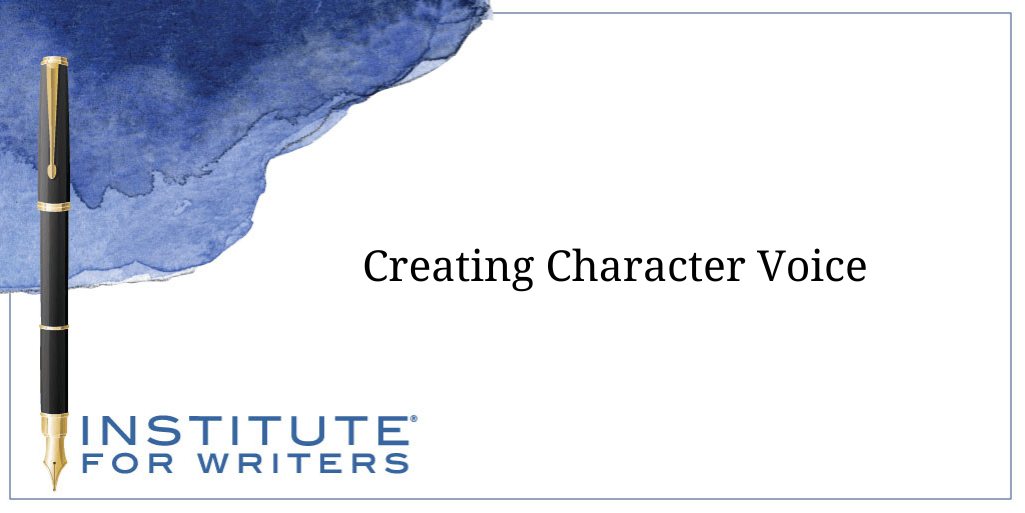
Influential Female Authors: Past, Present, and Rising
We’re going to look at influential female authors of the past, those impacting the present, and whom the industry expects to make a big splash.

Our last blog post discussed the importance of developing your voice as a writer. As you have read stories, articles, and books in the past few weeks, you may have noticed the distinct voice of writers you have come across and given thought to your own writing voice.
 Not only should the way you present your writing be unique to you, but each of your characters also needs their own distinct character voice. That means that, just like in real life, one character or person won’t sound like another. Your readers should sense the subtle (and not-so-subtle) differences between the characters they are presented as they read your stories.
Not only should the way you present your writing be unique to you, but each of your characters also needs their own distinct character voice. That means that, just like in real life, one character or person won’t sound like another. Your readers should sense the subtle (and not-so-subtle) differences between the characters they are presented as they read your stories.
Take a bit of time to listen to individuals in your life as they are talking. Notice how some speakers insert extra words into what they say, others try to make each statement they utter as concise as possible, and perhaps in an attempt to sound highly intelligent, there are people who speak with words not readily understood. There are those who are not always able to speak in a grammatically correct way, and some speakers use slang words and phrases as a regular part of their vocabulary. These unique personalities and speech patterns are important to be aware of and incorporate into your writing as a way to create characters who are real and believable.
As you develop characters for your stories, think about how you want each of their personalities to be presented and how you will differentiate between the natural differences among the people in your manuscript. Your challenge is to know your characters as well as you know anyone else in your life because this knowledge ensures that your writing is realistic and authentic and that your readers connect with the characters and the plot they are delving into.
A useful activity to help you think more about developing a unique voice for your characters is to watch an episode of a television show with a notebook and pen in hand. Make a list of each of the characters on the screen (and if you don’t know their name, just write a brief description, for example, “Adult with beard.”)
Study everything about these television people and write down what you notice about each of the characters in the show—their body language, facial movements, likability (or unlikability), and of course, their manner of speaking. Immerse yourself as thoroughly as you can while you jot down things you notice.
 After the show, take some time to review what you have written to see how each of the characters presented was unique in their own way. Of course, all people are unique and different and your writing must reflect that in order to have interesting and engaging characters.
After the show, take some time to review what you have written to see how each of the characters presented was unique in their own way. Of course, all people are unique and different and your writing must reflect that in order to have interesting and engaging characters.
Keep this in mind as you prepare to write a story. Make a list of characters you plan to include and then note everything you know about each of them. Refer to these prewriting notes as you create your manuscript as a way to keep their individual characteristics aligned and ensure that each has their own voice and that no two characters could be confused.
There is an important lesson and assignment in the Institute’s Writing for Children and Teenagers course that has students perform a somewhat similar and very useful activity—and it is important for those who write for adults to consider too. Students observe a subject of any age and write down the person’s external characteristics—their body language, their appearance, their mannerisms–everything about them. After they review this information, they write a short narrative and discreetly insert their notes about the subject, which becomes a strong external description that would give anyone reading it a clear picture of how the person observed appears and acts.
After completing their observation, the student will “know” this person pretty well, although they have not spoken with them at all. The second half of the assignment has them writing an internal description, this time in the first-person point of view from that subject’s perspective. Readers learn what is going on in the subject’s head and when the assignment is done well, it is easy for a reader to connect with the subject.
Students perform this activity so they can get closer to their characters before they incorporate them into a story. Creating an external and internal portrait of characters before they are part of a story is a good way to know them and write about them well. Think about how much easier it would be to write about your sibling or best friend than it would be to write about a character you have dreamed up. To write well about these imagined story characters, you need to know each of them as well as you know your own friends.
To create dialogue for your characters, imagine that you are having a conversation with them. Maybe they will speak with hesitation as they decide what they are going to say and how they are going to say it, and maybe they use lots of hand motions as they speak. You must make your characters appear as different as your family members and friends do, so strive to write dialogue that is authentic to each of them and not just necessary words coming within two quotation marks. Strive to be consistent with how you present each character in your story.
Remember that for writers of all abilities, nothing replaces constant reading in the genres and for the target audience they most enjoy writing for. Treat published books as textbooks and pay close attention to how other writers are successfully creating unique and authentic voices for their characters. This will strengthen your understanding of this important part of good writing.
Susan Ludwig, MEd has been an instructor with the Institute of Children’s Literature for almost twenty years. Susan’s writing credits include teacher resource guides, English language learner books, and classroom curriculum for elementary through high school students. A former magazine editor, she assesses students’ written essays as a scoring director for the ACT and SAT exam. When she is not writing or working, she is usually found playing with her grandsons or curled up with a good book.

We’re going to look at influential female authors of the past, those impacting the present, and whom the industry expects to make a big splash.

This week, we’re focusing on how we as writers can create strong female characters that others will look up to, instead of harmful stereotypes.

Is your writing routine reaching its potential? Maybe it’s time to take another look so you can see what’s possible for your writing.
1000 N. West Street #1200, Wilmington, DE 19801
© 2024 Direct Learning Systems, Inc. All rights reserved.

1000 N. West Street #1200, Wilmington, DE 19801
© 2025 Direct Learning Systems, Inc. All rights reserved.

1000 N. West Street #1200, Wilmington, DE 19801
©2025 Direct Learning Systems, Inc. All rights reserved. Privacy Policy.